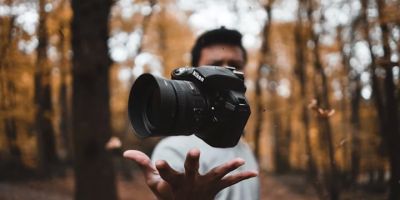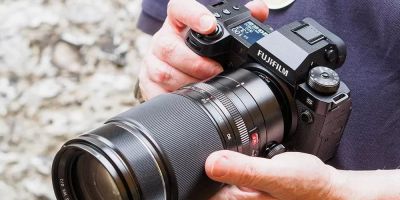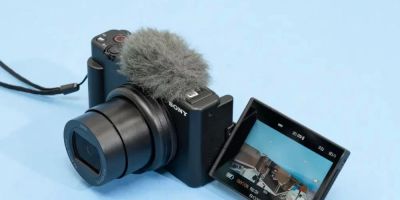- 1-Why-Quality-Gear-Matters-for-Panoramic-Photography
- 2-Cameras-Ideal-for-Panoramic-Shots
- 3-Lenses-and-Accessories-to-Enhance-Panoramic-Photography
- 4-Real-World-Examples-Showcasing-the-Impact-of-Gear-Choice
- 5-How-to-Find-the-Best-Gear-for-Your-Panoramic-Needs
1. Why Quality Gear Matters for Panoramic Photography
Panoramic photography is a captivating art that demands more than just a camera—it requires specialized equipment to truly capture sweeping vistas with clarity and precision. Using the best photography gear for panoramic shots ensures your images are sharp, distortion-free, and immersive, providing viewers with a vivid sense of space and scale.
Many photographers underestimate the importance of gear tailored specifically for panoramic images, leading to stitching errors or blurred edges that undermine the final result. Investing in quality equipment designed for this niche elevates your work and reduces post-processing challenges.
Technical Challenges in Panoramic Photography
Unlike standard photos, panoramic shots often involve stitching multiple images together seamlessly. This requires gear that offers consistent exposure, minimal lens distortion, and stable shooting platforms to align shots perfectly. Without the right tools, photographers risk creating mismatched horizons or uneven lighting.
The Role of Precision in Equipment
Precision tools like panoramic heads for tripods allow photographers to rotate the camera around the lens’s nodal point, reducing parallax errors. Such accuracy is key to smooth panoramas, especially in complex scenes with foreground and background elements.
2. Cameras Ideal for Panoramic Shots
Choosing the right camera is the foundation of exceptional panoramic photography. Many experts recommend cameras with high-resolution sensors, full manual controls, and compatibility with a wide range of lenses. Mirrorless cameras and DSLRs are often favored for their versatility and image quality.
High Resolution Sensors for Detail
A camera with a high megapixel count captures more detail, which is crucial for large panoramic prints or detailed cropping. Models like the Sony Alpha series or Canon EOS R provide excellent resolution and dynamic range, making them popular choices.
Camera Features That Support Panorama Modes
Some cameras offer built-in panoramic shooting modes, allowing automatic capture and stitching. While useful for casual photographers, professionals often prefer manual control to fine-tune exposures and composition.
3. Lenses and Accessories to Enhance Panoramic Photography
The right lenses and supporting gear greatly influence the quality of your panoramic images.
Choosing the Right Lens
Wide-angle lenses are essential to capture expansive scenes but watch out for distortion. Prime lenses with minimal distortion or specialized tilt-shift lenses can help maintain perspective accuracy. For example, a 24mm prime lens is often ideal for sweeping landscapes.
Tripods and Panoramic Heads
A sturdy tripod is indispensable for stable shots. Pairing it with a panoramic head that allows smooth and precise rotation is equally critical. This combination helps capture multiple overlapping images needed for seamless stitching.
Remote Shutters and Bubble Levels
Using a remote shutter reduces camera shake, ensuring crisp images. Built-in bubble levels or electronic leveling aids help maintain a perfectly horizontal horizon, which is vital for professional panoramas.
4. Real-World Examples Showcasing the Impact of Gear Choice
Photographer Lisa Hernandez, known for her breathtaking panoramic landscapes, credits her success to investing in specialized gear. On a recent trip to the Grand Canyon, she used a mirrorless camera paired with a 24mm prime lens and a precision panoramic tripod head. The result was a flawless 360-degree panorama that captured every nuance of the canyon’s vastness without distortion or stitching errors.
Lisa’s story illustrates how quality equipment directly impacts the ability to produce gallery-worthy panoramas. Without her specialized tripod head, for instance, parallax errors would have made the final image unusable.
Lessons from Gear Failures
Conversely, many enthusiasts share experiences of frustration when using inadequate gear. Common issues include lens distortion, shaky shots, and inconsistent exposure across frames, all of which degrade panoramic quality. These stories reinforce why careful gear selection is not just a luxury but a necessity.
5. How to Find the Best Gear for Your Panoramic Needs
Finding the best photography gear for panoramic shots can be overwhelming due to the variety of options. That’s where platforms like Photo Studio become invaluable. Photo Studio offers curated selections of cameras, lenses, and accessories suited specifically for panoramic photography.
On Photo Studio, photographers can compare products, read expert reviews, and even access rental options, making it easier to test equipment before committing to a purchase. This hands-on approach helps you invest wisely and elevate your panoramic photography skills.
Personalizing Your Gear Setup
Remember, the ideal gear depends on your style and shooting environment. Whether capturing urban skylines or natural landscapes, balancing portability, precision, and image quality is key. Take advantage of expert advice and detailed product descriptions on Photo Studio to customize your gear kit.





